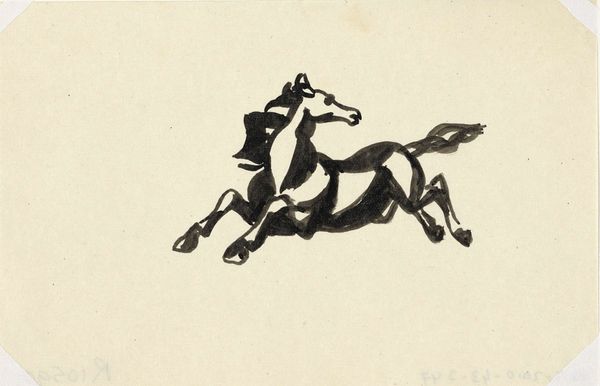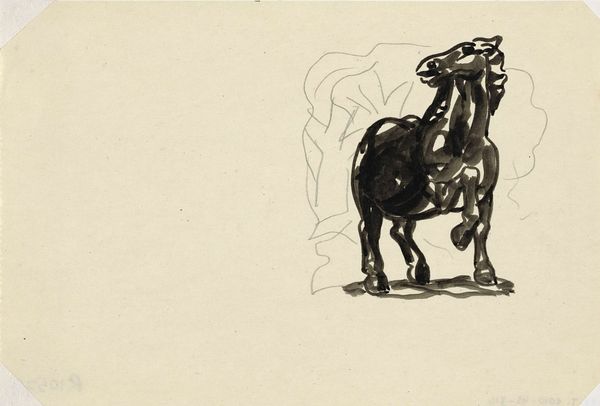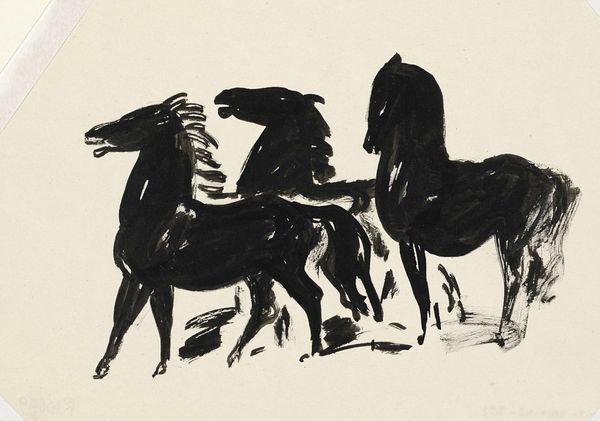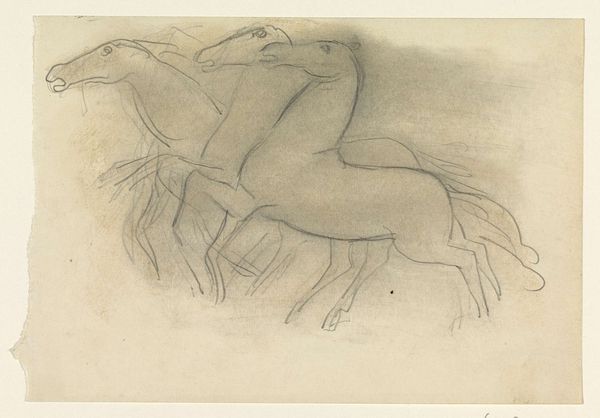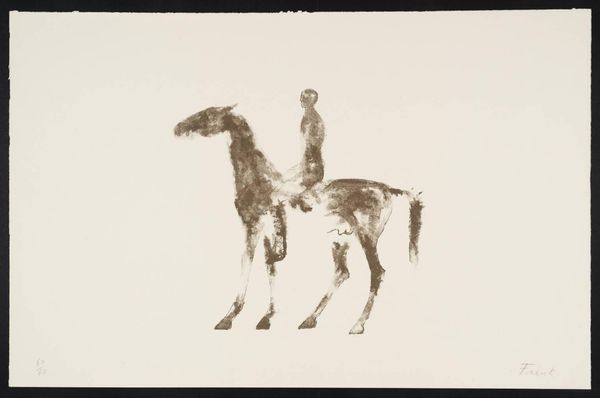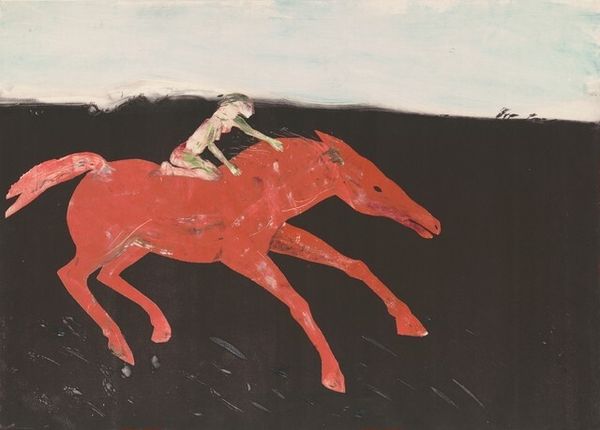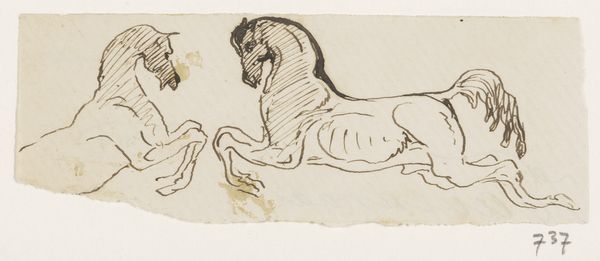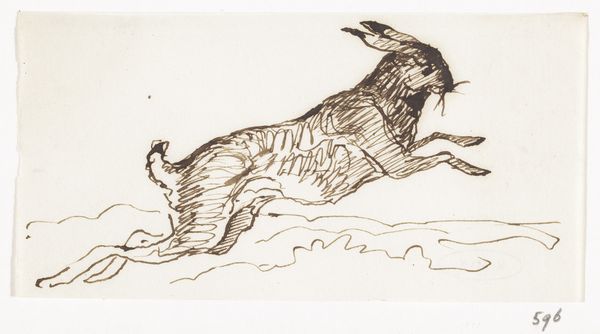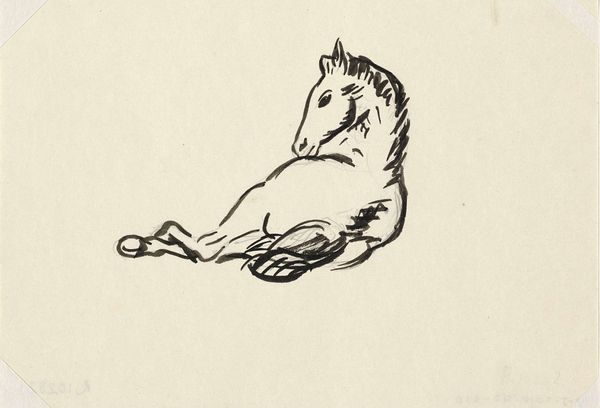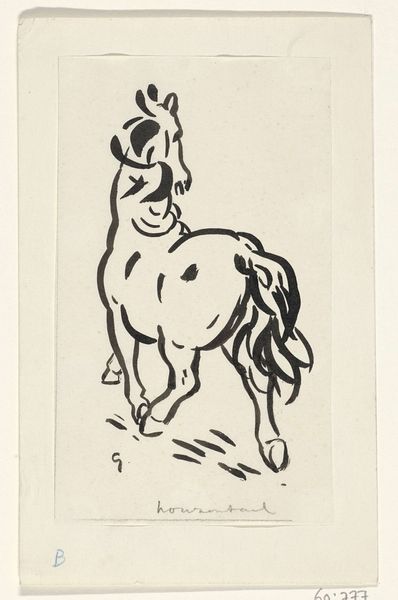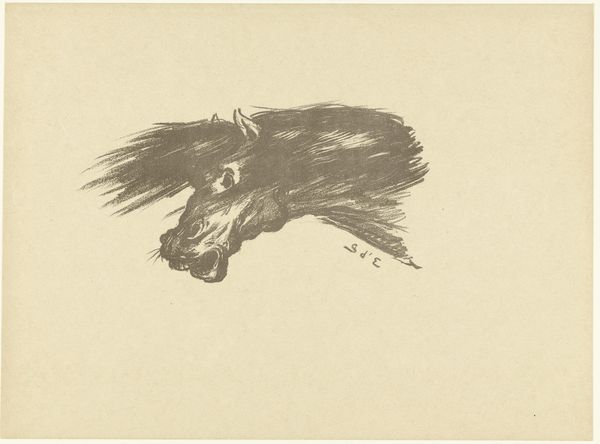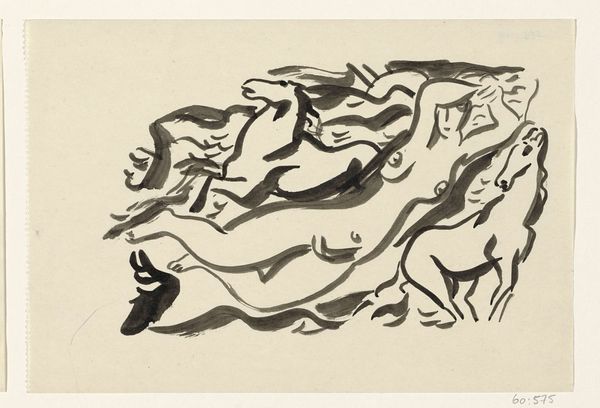
drawing, paper, ink
#
drawing
#
landscape
#
figuration
#
paper
#
flat colour
#
ink
#
horse
#
cartoon style
Dimensions: height 100 mm, width 155 mm
Copyright: Rijks Museum: Open Domain
Curator: Welcome. Here we have Leo Gestel's 1937 ink drawing on paper, titled "Springend paard met het hoofd naar achteren gedraaid," residing here at the Rijksmuseum. Editor: My first thought? It's wonderfully dynamic, but also somewhat unsettling. The sharp angles, the almost brutal simplicity of the line...it makes the horse seem trapped, despite its apparent motion. Curator: Interesting. I see this piece as a poignant commentary on the era in which it was created. Gestel, living through the rise of fascism and the increasing restrictions on personal freedom, may have used the image of a horse looking back as a symbol of resistance and a longing for what was being lost. The stark black ink against the paper evokes the harsh realities of those times. Editor: That reading is powerful. Still, from a purely visual standpoint, observe how Gestel uses line weight. The thick, almost violent strokes describe the horse's body, creating a sense of raw energy. The limited tonal range only intensifies the emotional impact. Curator: Absolutely. And it's important to acknowledge the horse itself. It has long been a symbol of freedom, power, and even nobility. But here, its forced backward glance might speak to the futility of escaping the encroaching darkness—the limitations on freedom during that period. Gestel's decision to depict this archetypal symbol in a state of distress raises critical questions about autonomy and control. Editor: I agree; its power derives in large part from its form—the starkness of the ink, the constrained palette, the tension created by the implied movement against the horse's backward gaze. It’s an arresting composition. The expressiveness Gestel achieves with such a restrained technique is remarkable. Curator: Understanding the historical climate of the 1930s contextualizes that tension. We see how the work embodies a sense of anxiety and constrained movement that characterized the pre-war period. Its raw lines translate Gestel's sentiments regarding political repression in Europe. Editor: Seeing how he translates those feelings in visual language is key, then, for interpreting not only Gestel's perspective, but those sentiments which echo into the present. Curator: Indeed. Through this evocative drawing, Gestel encourages us to remember and reconsider these themes.
Comments
No comments
Be the first to comment and join the conversation on the ultimate creative platform.
